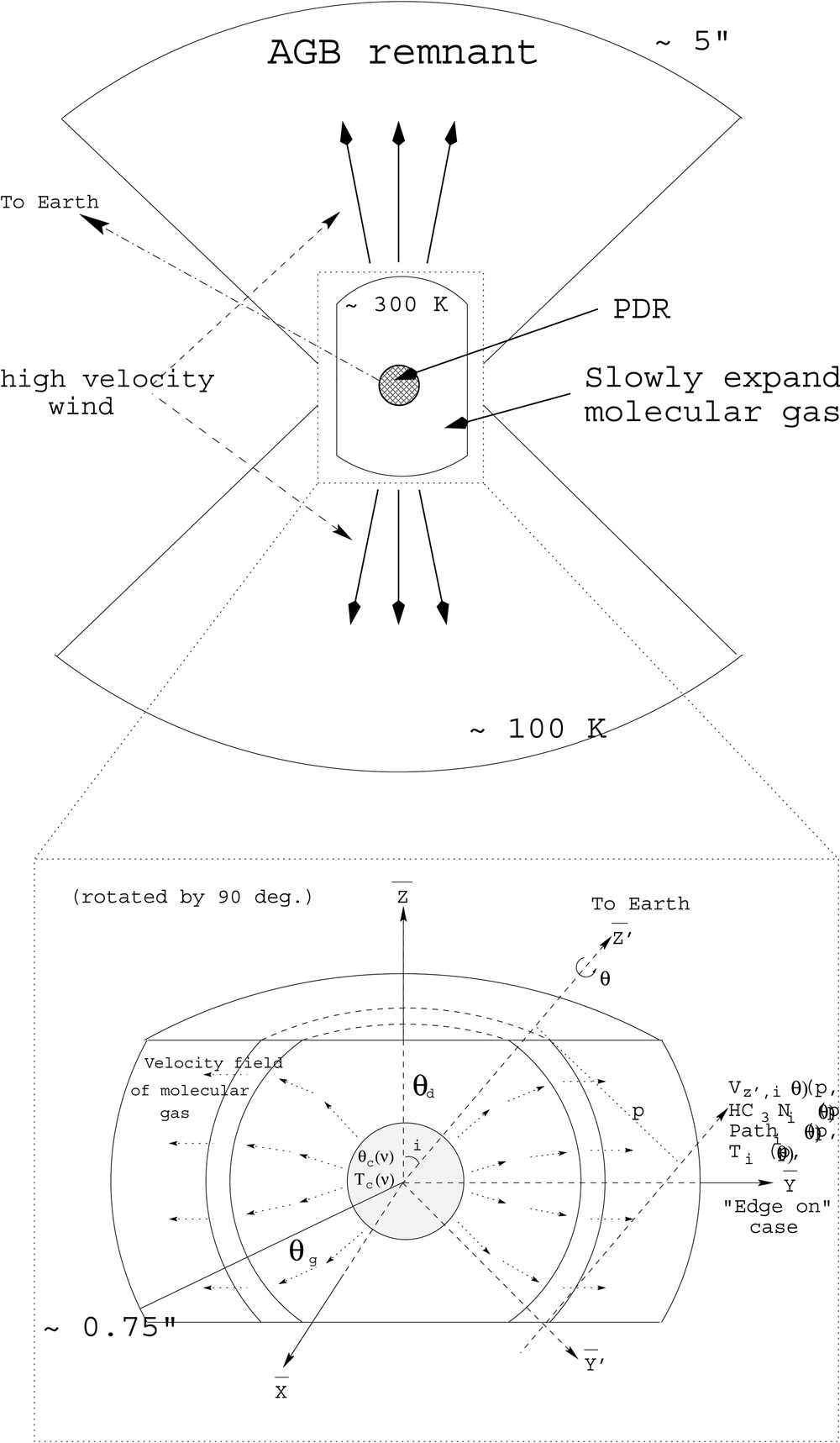Juan R.
Pardo-Carrion
Main Results
Physical conditions in CRL618
from HC3N observations
Lines from HC3N and isotopic substituted species in ground and vibrationally excited states produce crowded millimeter and submillimeter wave spectra in the C-rich protoplanetary nebula CRL618. The complete sequence of HC3N rotational lines from J=9-8 to J=30-29 has been observed with the IRAM 30m telescope toward this object in a total of 15 different vibrational states, with energies up to 1100 cm-1. Vibrationally excited HC3N rotational lines exhibit P-Cygni profiles at 3 mm, evolving to pure emission lineshapes at shorter wavelengths. The absorption features are formed against the continuum emission, which has been successfully characterized in this work due to the large frequency coverage. We have made an effort to simultaneously fit a representative set of observed HC3N lines through a model for an expanding shell around the central star and its associated HII region assuming that LTE prevails for HC3N. The large number of lines simultaneously analyzed allows to draw a quite precise picture of the physical conditions of the emitting region.
You can get more information about this work by downloading paper 36 from my publications list. You can also access the data and model for the complete line survey.


